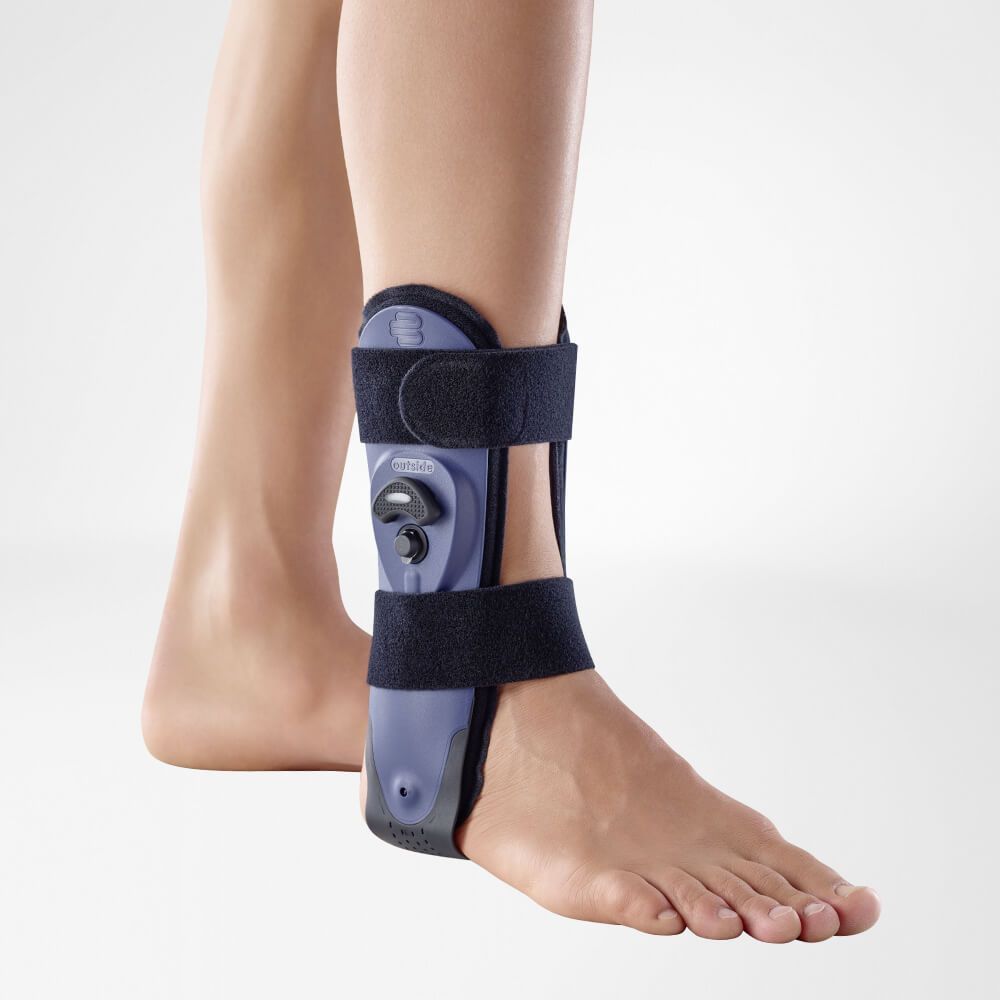Ankle Fracture
A broken ankle is almost always the result of a fall or accident. There is immediate pain, and swelling causes the ankle to become swollen. The ankle is composed of the fibula, tibia, and talus. For ankle issues, you can wear an ankle brace to promote recovery. Want to learn more about ankle problems? Read on for more information.
What is a broken ankle?
An ankle fracture occurs when one or more bones in the ankle break. In severe cases, bones may break in multiple places at the same time. The ankle can break on the outside (lower part of the fibula) as well as on the inside (part of the tibia). A broken ankle can result from a severe sprain or a collision on the sports field. The patient usually hears and/or feels the ankle break.
What are the symptoms of an ankle fracture?
There are several symptoms that indicate a broken ankle:
- Tenderness when pressing on the bone
- Painful ankle movements
- Swollen ankle
- Severe pain in and/or around the ankle
- Usually unable to bear weight on the ankle
What are the causes of a broken ankle?
There are several causes and risk factors for sustaining a broken ankle. The most common include:
- Sports injuries in activities such as ballet, soccer, skating
- Traffic accidents
- Falls in daily life
Risk factors that may contribute
Several factors may increase the risk of an ankle fracture:
- Age can play a role
- Physical condition
- Being overweight
- Wearing improper footwear

Diagnosis of a broken ankle
Not sure if it's a bruise or a broken ankle? Consult a doctor as soon as possible for proper treatment. The doctor can make an accurate diagnosis using X-rays, a CT scan, or an MRI. Based on this, the doctor will provide advice on the next steps for a speedy recovery.
Treatment options for a broken ankle
The doctor may choose a conservative treatment, which does not involve surgery, or a surgical treatment. Below, we explain what you can do yourself and what the doctor can do if the fracture is severe.
Conservative treatment
- Wearing a cast or splint. The cast is usually worn for about 5 weeks.
- You will receive supportive aids such as crutches.
Surgical treatment
The doctor will assess the severity of the fracture and determine whether surgery is necessary. During surgery, the doctor may insert plates, screws, or pins into the ankle to restore the bones. After surgery, the patient will need to undergo rehabilitation and gradually learn to walk with the foot again. To relieve pain and speed up the recovery process, you may consider using a brace.
How can you prevent an ankle fracture?
There are several measures you can take to prevent an ankle fracture:
- Wear proper footwear.
- If you are elderly or less mobile, make sure your home environment minimizes the risk of falls.
- Adjust your diet and strengthen muscles through exercises.
Treatment of the ankle
Many fractures are aligned so that the bones are properly positioned again. After that, they are treated with a cast, which can last 4 to 6 weeks. In more severe cases, surgery may be necessary. During the operation, the broken bone fragments are correctly repositioned and fixed with plates and screws. After surgery, there is a period of 6 weeks in which the leg must not bear weight. Under the supervision of physical therapy, weight-bearing capacity can gradually be restored. Full rehabilitation to sports level can take up to a year, depending on the fracture, the duration of the cast, and the patient’s natural functional level.
Recovery from a broken ankle
To speed up rehabilitation or prevent a fracture, you may consider wearing a brace. At Podobrace, we offer various ankle braces that can provide support for these issues. Questions about which brace best suits your condition? Contact our team of specialists. We are happy to assist you in managing your complaints.

Bauerfeind AirLoc Ankle Support
Protection level 3
Gladiator Sports Lightweight Ankle Support with Straps

Dunimed ROM Walker Foot Support
Protection level 3
Dunimed Premium Ankle Support (Black & Beige)

- Physiotherapist
- Sports podiatrist
- Manual therapist
- Podopostural therapist
- Myofascial dry needling specialist


